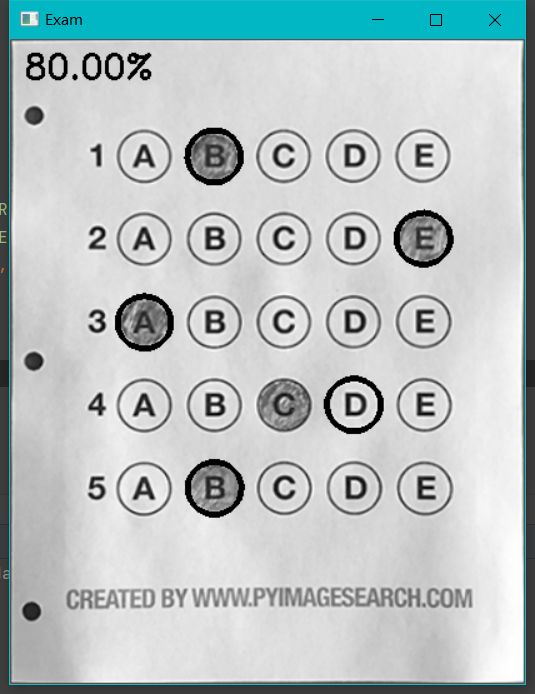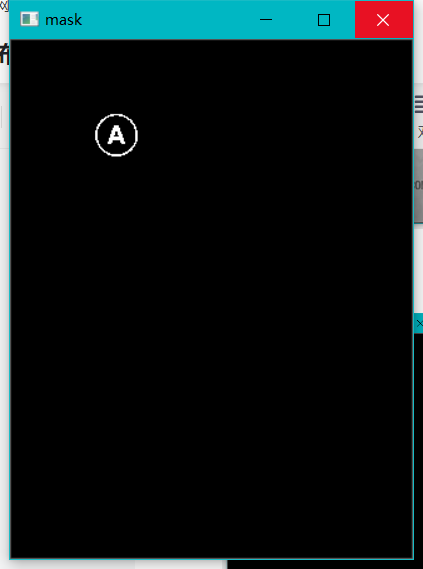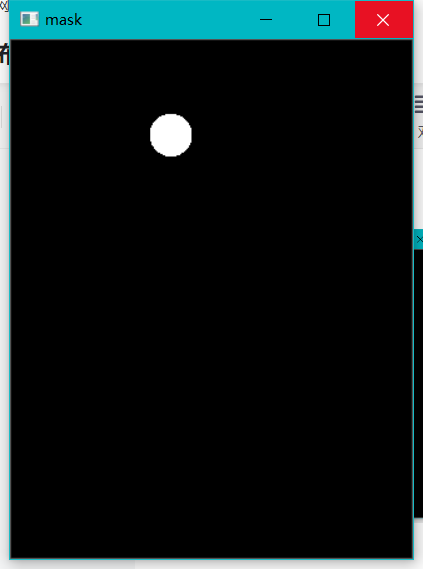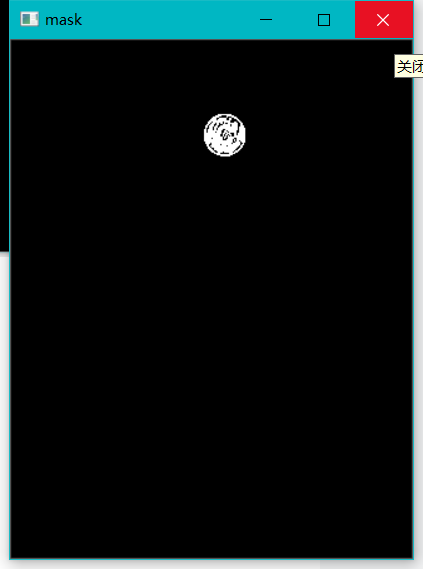哔站唐宇迪opencv课程——项目实战:答题卡识别判卷
【计算机视觉-OpenCV】唐宇迪博士教会了我大学四年没学会的OpenCV OpenCV计算机视觉实战全套课程(附带课程课件资料+课件笔记+源码)_哔哩哔哩_bilibili
目录
方法:试卷扫描-轮廓检测-对每一个位置指定掩码 -统计里面非零值大小-哪个选项值最大就选的是哪个
导入工具包
import numpy as np
import argparse
import imutils
import cv2设置参数
ap=argparse.ArgumentParser()
ap.add_argument("-i","--image",required=True,help="path to the input image")
args=vars(ap.parse_args())正确答案
# 正确答案
ANSWER_KEY = {0: 1, 1: 4, 2: 0, 3: 3, 4: 1}
绘图函数
def cv_show(name,img):
cv2.imshow(name, img)
cv2.waitKey(0)
cv2.destroyAllWindows()
Step1 预处理
1.1高斯滤波
#预处理
image = cv2.imread(args["image"])
contours_img = image.copy()
gray = cv2.cvtColor(image,cv2.COLOR_BGR2GRAY)#灰度
blurred = cv2.GaussianBlur(gray,(5,5),0)#高斯滤波去噪音
cv_show('blurred',blurred)
高斯滤波 :

1.2边缘检测
#边缘检测
edges = cv2.Canny(blurred,75,200)
cv_show("edges",edges)
边缘检测:

1.3轮廓检测
#轮廓检测
cnts = cv2.findContours(edges.copy(),cv2.RETR_EXTERNAL,cv2.CHAIN_APPROX_SIMPLE)[1]
cv2.drawContours(contours_img,cnts,-1,(0,0,255),3)
cv_show("contours_img",contours_img)
docCnt = None轮廓检测:

Step2透视变换
#确保检测到了
if len(cnts) > 0:
#根据轮廓大小进行排序
cnts = sorted(cnts,key=cv2.contourArea,reverse=True)
#遍历每一个轮廓
for c in cnts:
#近似
peri = cv2.arcLength(c,True)
approx = cv2.approxPolyDP(c,0.02*peri,True) #近似轮廓
# 准备做透视变换
if len(approx) == 4:
docCnt = approx
break #找到了做透视变换的四个坐标了
#执行透视变换
warped = four_point_transform(gray,docCnt.reshape(4,2))
cv_show("warped",warped)
2.1 four_point_transform
def four_point_transform(image,pts):
#获取输入坐标点
rect = order_points(pts)
(tl,tr,br,bl) = rect
#计算输入的w和h值
widthA = np.sqrt(((br[0] - bl[0]) ** 2) + ((br[1] - bl[1]) ** 2))
widthB = np.sqrt(((tr[0] - tl[0]) ** 2) + ((tr[1] - tl[1]) ** 2))
maxWidth = max(int(widthA),int(widthB))
heightA = np.sqrt(((tr[0] - br[0]) ** 2) + ((tr[1] - br[1]) ** 2))
heightB = np.sqrt(((tl[0] - bl[0]) ** 2) + ((tl[1] - bl[1]) ** 2))
maxHeight = max(int(heightA),int(heightB))
#变换后对应坐标位置
dst = np.array([
[0, 0],
[maxWidth - 1, 0],
[maxWidth - 1, maxHeight - 1],
[0, maxHeight - 1]], dtype="float32")
#计算变换矩阵
M = cv2.getPerspectiveTransform(rect,dst)
warped = cv2.warpPerspective(image,M,(maxWidth,maxHeight))
#返回变换后结果
return warped
2.2 order_points
def order_points(pts):
#根据位置信息定位四个坐标点的位置
rect = np.zeros((4,2),dtype="float32")
s = pts.sum(axis=1)
rect[0] = pts[np.argmin(s)]
rect[2] = pts[np.argmax(s)]
diff = np.diff(pts,axis=1)
rect[1] = pts[np.argmin(diff)]
rect[3] = pts[np.argmax(diff)]
return rect
透视变换:

Step3 二值处理
#0tsu's阈值处理
#参数:预处理好的图像、0:自动判断、cv2.THRESH_OTSU:自适应
thresh=cv2.threshold(warped,0,255,cv2.THRESH_BINARY_INV|cv2.THRESH_OTSU)[1]
cv_show('thresh',thresh)
二值结果:

Step4
4.1寻找圆圈轮廓
thresh_Contours=thresh.copy()
#找到每一个圆圈轮廓
cnts=cv2.findContours(thresh.copy(),cv2.RETR_EXTERNAL,cv2.CHAIN_APPROX_SIMPLE)[1]
cv2.drawContours(thresh_Contours,cnts,-1,(0,0,255),3)
cv_show('thresh_Contours',thresh_Contours)

4.2寻找选项轮廓
questionCnts = []
#遍历
for c in cnts:
#计算比例和大小
(x,y,w,h) = cv2.boundingRect(c)#圆形的外接矩形
ar = w/float(h)#宽和长的比值
#根据实际情况设定标准
if w>=20 and h>=20 and ar>=0.9 and ar<=1.1:
questionCnts.append(c)4.3选项轮廓从上到下排序
#将每一个圆形的轮廓按照从上到下进行排序
questionCnts = sort_contours(questionCnts,method="top-to-bottom")[0]
4.3.1 sort_contours
def sort_contours(cnts,method="left-to-right"):
reverse = False
i = 0
if method == "right-to-left" or method == "bottom-to-top":
reverse = True
if method == "top-to-bottom" or method == "bottom-to-top":
i = 1
# 计算外接矩形 boundingBoxes是一个元组
boundingBoxes = [cv2.boundingRect(c) for c in cnts]#用一个最小的矩形,把找到的形状包起来x,y,h,w
# sorted排序
(cnts, boundingBoxes) = zip(*sorted(zip(cnts, boundingBoxes),
key=lambda b: b[1][i], reverse=reverse))
return cnts,boundingBoxes# 轮廓和boundingBoxess
Step5输出结果
给每个题的五个轮廓从左到右排序,每个选项做掩码,与操作,统计选项里面非零值大小,哪个选项值最大就选的是哪个,记录下来与正确选项对比,计算正确的个数。
correct=0
for (q,i) in enumerate(np.arange(0,len(questionCnts),5)):
#排序
cnts = sort_contours(questionCnts[i:i+5])[0]
bubble = None
#遍历每一个结果
for (j,c) in enumerate(cnts):
#使用mask来判断结果
mask = np.zeros(thresh.shape,dtype="uint8")
cv2.drawContours(mask,[c],-1,255,-1)#-1表示填充
cv_show('mask',mask)
#通过计算非零像素点的数量来算是否选择这个答案
mask = cv2.bitwise_and(thresh,thresh,mask=mask)
#通过与操作,只保留了掩码为白色的那一个部分
cv_show('mask',mask)
total = cv2.countNonZero(mask)
#通过阈值判断
if bubble is None or total>bubble[0]:
bubble = (total,j)
#对比正确答案
color = (0,0,255)
k = ANSWER_KEY[q] #q代表现在检查的是第q个题
#k是正确答案
if k == bubble[1]:
color = (0,255,0)
correct += 1

Step6打印操作
#绘图
cv2.drawContours(warped,[cnts[k]],-1,color,3)
score = (correct/5.0) * 100
print("[INFO] score:{:.2f}%".format(score)) #这个%只是为了显示为60%,没有其他意思
cv2.putText(warped,"{:.2f}%".format(score),(10,30),cv2.FONT_HERSHEY_SIMPLEX,0.9,3)
cv_show("Original",image)
cv_show("Exam",warped)

完整代码
import numpy as np
import argparse
import imutils
import cv2
ap = argparse.ArgumentParser()
ap.add_argument("-i","--image",required=True,help="path to the input image")
args = vars(ap.parse_args())
# 正确答案
ANSWER_KEY = {0: 1, 1: 4, 2: 0, 3: 3, 4: 1}
def order_points(pts):
# 一共4个坐标点
rect = np.zeros((4, 2), dtype="float32")
# 按顺序找到对应坐标0123分别是 左上,右上,右下,左下
# 计算左上,右下
s = pts.sum(axis=1)
rect[0] = pts[np.argmin(s)]
rect[2] = pts[np.argmax(s)]
# 计算右上和左下
diff = np.diff(pts, axis=1)
rect[1] = pts[np.argmin(diff)]
rect[3] = pts[np.argmax(diff)]
return rect
def four_point_transform(image, pts):
# 获取输入坐标点
rect = order_points(pts)
(tl, tr, br, bl) = rect
# 计算输入的w和h值
widthA = np.sqrt(((br[0] - bl[0]) ** 2) + ((br[1] - bl[1]) ** 2))
widthB = np.sqrt(((tr[0] - tl[0]) ** 2) + ((tr[1] - tl[1]) ** 2))
maxWidth = max(int(widthA), int(widthB))
heightA = np.sqrt(((tr[0] - br[0]) ** 2) + ((tr[1] - br[1]) ** 2))
heightB = np.sqrt(((tl[0] - bl[0]) ** 2) + ((tl[1] - bl[1]) ** 2))
maxHeight = max(int(heightA), int(heightB))
# 变换后对应坐标位置
dst = np.array([
[0, 0],
[maxWidth - 1, 0],
[maxWidth - 1, maxHeight - 1],
[0, maxHeight - 1]], dtype="float32")
# 计算变换矩阵
M = cv2.getPerspectiveTransform(rect, dst)
warped = cv2.warpPerspective(image, M, (maxWidth, maxHeight))
# 返回变换后结果
return warped
def sort_contours(cnts, method="left-to-right"):
reverse = False
i = 0
if method == "right-to-left" or method == "bottom-to-top":
reverse = True
if method == "top-to-bottom" or method == "bottom-to-top":
i = 1
boundingBoxes = [cv2.boundingRect(c) for c in cnts]
(cnts, boundingBoxes) = zip(*sorted(zip(cnts, boundingBoxes),
key=lambda b: b[1][i], reverse=reverse))
return cnts, boundingBoxes
def cv_show(name, img):
cv2.imshow(name, img)
cv2.waitKey(0)
cv2.destroyAllWindows()
# 预处理
image = cv2.imread(args["image"])
contours_img = image.copy()
gray = cv2.cvtColor(image, cv2.COLOR_BGR2GRAY)
blurred = cv2.GaussianBlur(gray, (5, 5), 0)
cv_show('blurred', blurred)
edged = cv2.Canny(blurred, 75, 200)
cv_show('edged', edged)
# 轮廓检测
cnts = cv2.findContours(edged.copy(), cv2.RETR_EXTERNAL,
cv2.CHAIN_APPROX_SIMPLE)[1]
cv2.drawContours(contours_img, cnts, -1, (0, 0, 255), 3)
cv_show('contours_img', contours_img)
docCnt = None
# 确保检测到了
if len(cnts) > 0:
# 根据轮廓大小进行排序
cnts = sorted(cnts, key=cv2.contourArea, reverse=True)
# 遍历每一个轮廓
for c in cnts:
# 近似
peri = cv2.arcLength(c, True)
approx = cv2.approxPolyDP(c, 0.02 * peri, True)
# 准备做透视变换
if len(approx) == 4:
docCnt = approx
break
# 执行透视变换
warped = four_point_transform(gray, docCnt.reshape(4, 2))
cv_show('warped', warped)
# Otsu's 阈值处理
thresh = cv2.threshold(warped, 0, 255,
cv2.THRESH_BINARY_INV | cv2.THRESH_OTSU)[1]
cv_show('thresh', thresh)
thresh_Contours = thresh.copy()
# 找到每一个圆圈轮廓
cnts = cv2.findContours(thresh.copy(), cv2.RETR_EXTERNAL,
cv2.CHAIN_APPROX_SIMPLE)[1]
cv2.drawContours(thresh_Contours, cnts, -1, (0, 0, 255), 3)
cv_show('thresh_Contours', thresh_Contours)
questionCnts = []
# 遍历
for c in cnts:
# 计算比例和大小
(x, y, w, h) = cv2.boundingRect(c)
ar = w / float(h)
# 根据实际情况指定标准
if w >= 20 and h >= 20 and ar >= 0.9 and ar <= 1.1:
questionCnts.append(c)
# 按照从上到下进行排序
questionCnts = sort_contours(questionCnts,
method="top-to-bottom")[0]
correct = 0
# 每排有5个选项
for (q, i) in enumerate(np.arange(0, len(questionCnts), 5)):
# 排序
cnts = sort_contours(questionCnts[i:i + 5])[0]
bubbled = None
# 遍历每一个结果
for (j, c) in enumerate(cnts):
# 使用mask来判断结果
mask = np.zeros(thresh.shape, dtype="uint8")
cv2.drawContours(mask, [c], -1, 255, -1) # -1表示填充
cv_show('mask', mask)
# 通过计算非零点数量来算是否选择这个答案
mask = cv2.bitwise_and(thresh, thresh, mask=mask)
cv_show('mask', mask)
total = cv2.countNonZero(mask)
# 通过阈值判断
if bubbled is None or total > bubbled[0]:
bubbled = (total, j)
# 对比正确答案
color = (0, 0, 255)
k = ANSWER_KEY[q]
# 判断正确
if k == bubbled[1]:
color = (0, 255, 0)
correct += 1
# 绘图
cv2.drawContours(warped, [cnts[k]], -1, color, 3)
score = (correct / 5.0) * 100
print("[INFO] score: {:.2f}%".format(score))
cv2.putText(warped, "{:.2f}%".format(score), (10, 30),
cv2.FONT_HERSHEY_SIMPLEX, 0.9, (0, 0, 255), 2)
cv2.imshow("Original", image)
cv2.imshow("Exam", warped)
cv2.waitKey(0)












